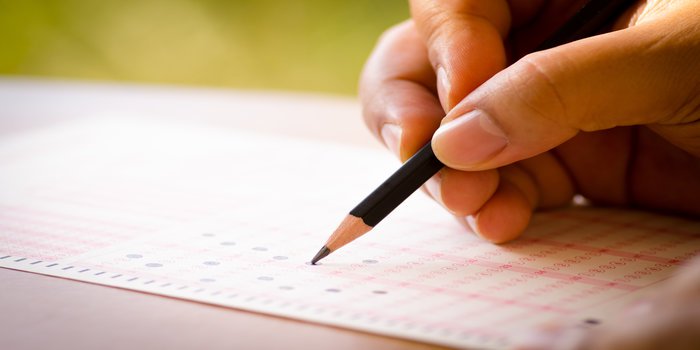By Jhalak Nandwani, Gujarat National Law University, Gandhinagar.
“It is not enough to aim, you must hit.” -ITALIAN PROVERB
Many young minds aim to score well in the Common Law Admission Test and get an admission in one of the top ranked National Law Universities of our Country. However, merely aiming isn’t enough. What will help you achieve your goal is your hard work and zest that will surely help you to stand out from the rest.
The Common Law Admission Test commonly referred to as CLAT, is an all India entrance examination conducted for people aspiring to pursue various courses in Law, i.e., the undergraduate (LL.B.) course and the postgraduate course (LL.M.). The exam is conducted by National Law Universities on a rotational basis. The paper , consists of 200 multiple choice questions, amounting to 200 Marks in total. 1 mark is awarded for every correct answer and 0.25 marks are deducted for each incorrect one. Students are given 120 MINUTES to attempt the same. The test consists of 5 sections:
English: 40 Marks
GK or Current Affairs: 50 Marks
Elementary Mathematics: 20 Marks
Logical Reasoning: 40 Marks
Legal Aptitude: 50 Marks
The English Section consists of comprehensions, basic grammar and basic Legal English consisting of a few legal maxims and terms. Comprehensions are the most scoring and easy part, so students are advised to solve comprehensions first in this section. Generally students tend to avoid practicing comprehension thinking the same to be the easiest, but regular practice of comprehensions can help you improve your reading speed. This would subsequently help you in solving them faster and save time for rest of the sections. Students are advised to read the editorial column of newspapers on a regular basis and pick out five new words from it, daily, as it would help them to enhance their vocabulary. A book titled “Word Power Made Easy” by Norman Lewis can also be referred to, for dealing with the vocabulary questions. This section must be completed within 30 minutes.
Next is the GK section, wherein candidates are assessed on the basis of their general awareness and current affairs. In this section, students can solve each question in less than a minute. Current Affairs comprises of questions on recent happenings around the world in the previous one year and General Knowledge consists of questions centred around static knowledge of all subjects like politics, history, geography, economics, etc. A thorough reading of the newspaper and some general knowledge magazines/books (Pratiyogita Darpan) on a daily basis can help to scoring well in this section. This section can be easily completed in maximum 10 minutes.
Next is Elementary Mathematics. It basically covers mathematics taught till Class 10. Out of the 20 questions asked, some are extremely simple and could be solved easily. Students who think math is a difficult subject, are advised not to leave this section, as those few questions can help you score a notch above others. A thorough understanding of concepts is necessary as it can help you solve questions easily. Many a times, some questions take a lot of time to solve, so students are advised to leave those questions for the time being, and attempt the next ones Maximum of 20 minutes must be given to this section, i.e., 1 minute for each question.
Next we come to logical reasoning. This section assesses the candidate’s ability to think logically, identify patterns and spot correct arguments. It comprises of questions on syllogisms, analogies, logical sequences, etc. This section can easily be called the most interesting section in the entire paper and you could easily score well here. Regular practice of logical reasoning questions can help you learn new tricks and methods to solve questions and that can also help in developing a good time management strategy depending on the question. This section must be allocated a maximum of 25 minutes.
Next is Legal Aptitude. This section assesses the candidates on their inclination towards law and their expertise in research and ability to solve problems. The questions include legal principles that have to be applied in certain situations where the candidate has to judge the situation and come up with an apt solution. The score in legal aptitude will be used to break the ‘tie’, i.e., when two or more students score equal marks, then the score in this section will be used to decide the better of the two. So, it is important to score well in this section. The legal questions asked in this section are very basic and situational. An in-depth knowledge of law is not required. A basic reading and proper understanding of all topics and practicing questions on a regular basis is necessary to attempt this section properly. This is also a time consuming section; a proper time management strategy is hence necessary, which could be achieved only through regular practice. As this section carries the highest number of marks, 30 minutes should be designated to complete the same.
After completing all the sections in 110 minutes, candidates are left with 10 minutes to look back on the questions that they had initially left for later and to revise the entire paper as well. As time management is essential in the exam, one needs to solve each question in less than two minutes.
The main mantra for scoring well is to solve previous years’ papers and as many mock question papers as possible. Focus on your weakness. Practice more questions based on the section you think you are lagging behind in. This will help you overcome your weakness and fetch better marks in the desired section.
Finally, what is suggested is, always start with the section you are most confident about. Solve easy questions first and do not stick on one question for a longer time. Students are advised not to solve any mock papers on the day of the examination and just be relaxed, calm and confident.

